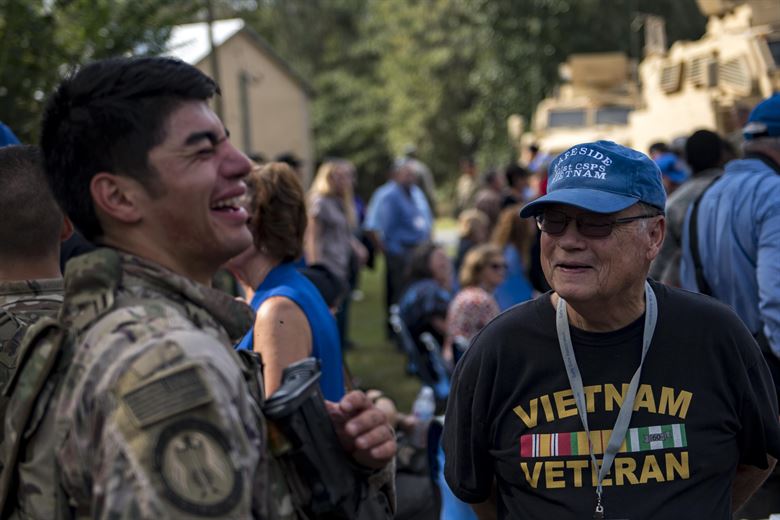
Contrary to popular belief, U.S. military veterans haven’t always been affiliated with the Republican Party — in fact, throughout much of the 1970s and 1980s and into the early 1990s, veterans were more likely to be Democrats, according to a new analysis published in Sociological Spectrum.
In more recent decades, veterans have begun to lean increasingly toward the Grand Old Party, researchers found.
Steven L. Foy and Salvatore J. Restifo, assistant professors of sociology at the University of Texas Rio Grande Valley, examined shifts in party affiliation among generations of veterans.
Among those who came of age before World War II, 55.4 percent identified as Democrats, 38.3 percent identified as Republicans and 6.2 percent considered themselves Independents.
Fast forward several decades and party ties look quite different. About a third of veterans who turned 18 between 1972 and 2016 identified as Democratic. Just more than half said they were Republican, and 16.7 percent were Independent.
“Our results suggest that the historical tendency for veterans to identify as Democrats is reversing course,” Foy and Restifo write.
For the study, the two researchers examined 18 years of data that the University of Chicago’s National Opinion Research Center gathered through nationally representative surveys between 1974 and 2016. They focused on how men aged 18 and older answered questions about military service, political affiliation and their personal backgrounds. The scholars analyzed response data from a total of 10,251 people, 35 percent of whom were veterans.
Foy and Restifo excluded women because they make up such a small proportion of the veteran population — 2 percent as of 2013, according to the U.S. Department of Defense. Also, women have not been subject to compulsory military enlistment and possible conscription, which are factors the researchers considered as part of their analysis.
When they looked at the sample as a whole, they found that 49.8 percent of veterans identified as Democrats while 39.1 percent said they were Republican. The remaining 11.1 percent were Independents.
In comparison, men who were not veterans were slightly less likely to be Democrats. The breakdown: 47.8 percent Democrat, 38.2 percent Republican, 14 percent Independent.
When Foy and Restifo looked at military service and political affiliation over time, here’s what else they learned:
- “From 1974 to 1991, the percentage of veterans identifying as Democratic remained relatively comparable to, if not higher than, the percentage of nonveterans identifying as Democratic — a trend that sits in stark contrast with common assumptions that veterans tend to disproportionately align and affiliate with the Republican Party.”
- In 1993 and 1994, the proportion of veterans who identified as Democrats dropped significantly below the proportion of non-veterans who did. In 2012, Democratic identification rose among veterans but then dropped sharply over the next few years.
- Increased affiliation with the Republican Party corresponds with the shift toward an all-volunteer army. The draft was eliminated in 1973.
- There is no apparent link between party affiliation and the length of time a man served in the military.
- “In attempting to predict veteran political affiliation, we should consider veterans not as a monolithic group but rather as distinguished from one another in patterned and meaningful ways by cohort.”
Looking for more research on veterans? Check out our write-ups on veteran suicide prevention and the challenges retired troops face when using V.A. services. We also have a tip sheet on reporting on war trauma survivors.
Some other helpful resources:
- The U.S. Department of Veterans Affairs offers a range of data and reports on American veterans, broken down by race/ethnicity, age, gender, military branch and period of time served.
- The U.S. Census Bureau uses surveys to collect demographic, social and economic data on veterans. Journalists can go to the agency’s website for state-level reports as well as national reports focusing on subgroups such as female veterans and veterans living in rural areas.
- The National Archives is the official repository for military records. While most of its holdings aren’t available online, it does provide some documents via its website, including war casualty statistics, photos of U.S. Navy ships, sketches of Civil War forts and records for military prisoners of war.
- The Pew Research Center issues occasional reports related to veterans, military personnel or military families. A November 2017 report, for example, looks at the changing demographics of the veteran population.
